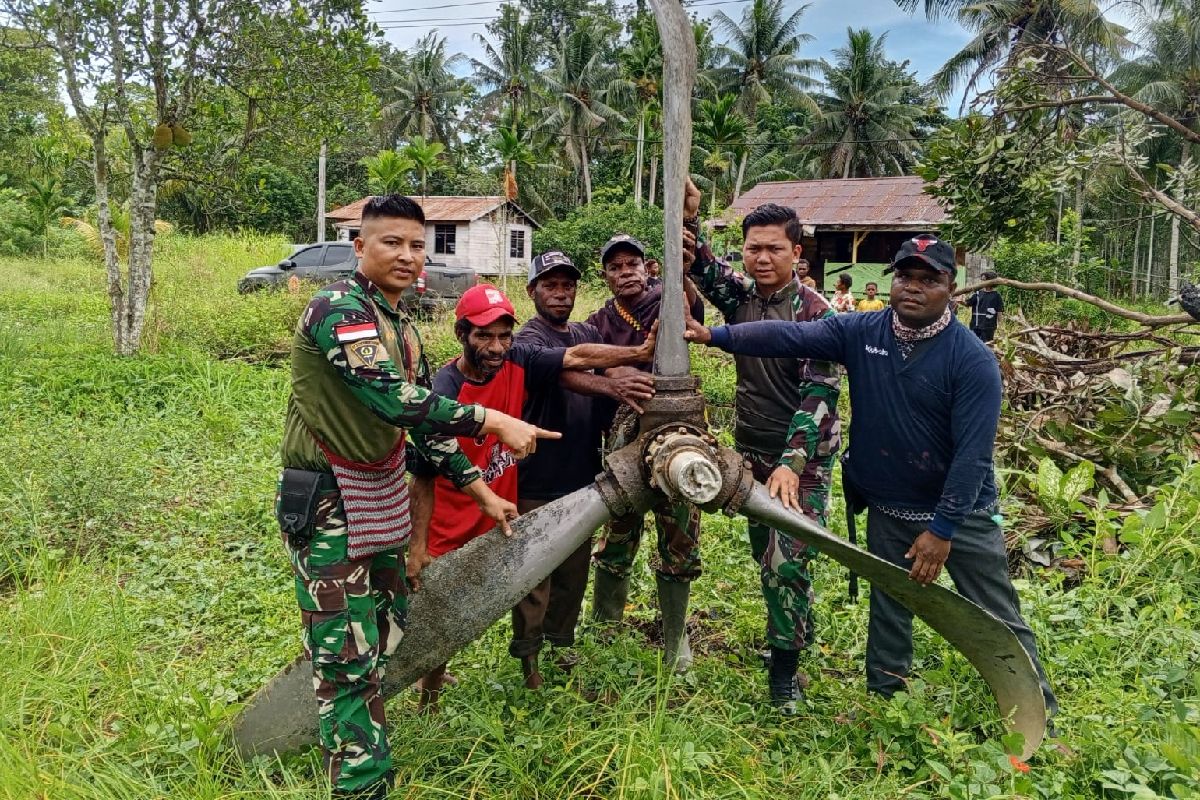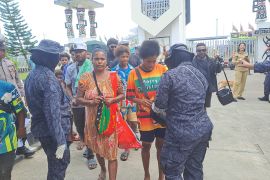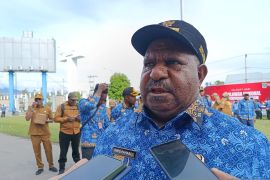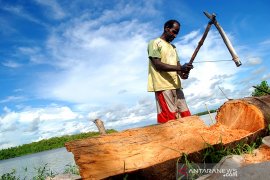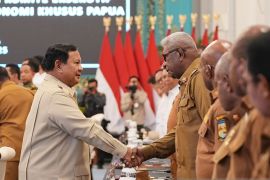Several villagers were the first to inform about the plane wreckage to the 122/Tombak Sakti (TS) Infantry Battalion Task Force personnel operating in the area, the task force's commander, Lt Col Dicky Apriyadi, stated.
To check the crash site, several soldiers along with villagers on Wednesday (May 22) went to the forest that the locals highly respect for generations, as they regard it as a "sacred site", he told ANTARA on Thursday.
Hence, before heading to the forest, a traditional ritual was held under the leadership of tribal chief Amyu Karlos Enev Ewir, he remarked when contacted from Jayapura, the capital of Papua Province.
The World War II plane that crashed in Keerom District's Intipapo forest area, located near the Indonesia-Papua New Guinea border, might belong to Poland, Apriyadi stated.
The plane might have crashed in 1942, but its wreckage remains untouched for decades owing to the sacred status of the forest for locals, though there have currently been palm plantation areas near the sacred forest, he remarked.
In winning the villagers' hearts and minds, the 122/Tombak Sakti (TS) Infantry Battalion Task Force's personnel made utmost efforts to approach them through a humanistic approach, he noted.
They respect the villagers' traditional ritual before going into the forest and also provided them with medical services, Apriyadi said.
"Now, this World War II plane's propeller has been removed from the Intipapo forest and reported to the Keerom district government, the 172/PWY District Military Command, and the Silas Papare Air Force Base," he revealed.
New Guinea, according to the historical records of World War II, is known as the world's second-largest island after Greenland that had become one of the tough battlegrounds between the Japanese and the United States-led allied forces.
At that time, as Britannica.com depicted, the Allied forces in Southwest Pacific was led by General Douglas MacArthur after he was ordered to Australia in March 1942.
The source noted that General MacArthur "launched an offensive in New Guinea that drove the Japanese out of Papua by January 1943".
Due to this historical background, several areas of the Indonesian province of Papua had become home to the remains of the Second World War sites.
In Biak Numfor District, for instance, several caves at Sumberker Village, Samofa Sub-district, had also been used by the Japanese soldiers as shelters during the war.
Hence, several Japanese tourists, accompanied by several Indonesian officials, had frequently visited various World War II sites in Biak Numfor, including the caves.
In March 2011, some 11 Japanese visited the WW II sites in Biak Numfor. They were the team leader Nishikubo Manabu, Kazushi Yamagishi, Iwabuchi Nobuteru, Okubo Harua, Sachio Tanaka, Yoshiko Sakamoto, Kazuki Chida, Yazusima Takashi, Takashi Yasukawa, and Ikuyo Sato Saputro.
Their visit to Biak Numfor was a routine activity as a follow up of a cooperation accord between the Japanese and Indonesian governments in the framework of bilateral relations, especially in the socio-cultural field.
Related news: Papua's Biak Numfor plans to build underwater museum
Translator: Evarukdijati, Rahmad Nasution
Editor: Bayu Prasetyo
Copyright © ANTARA 2024
